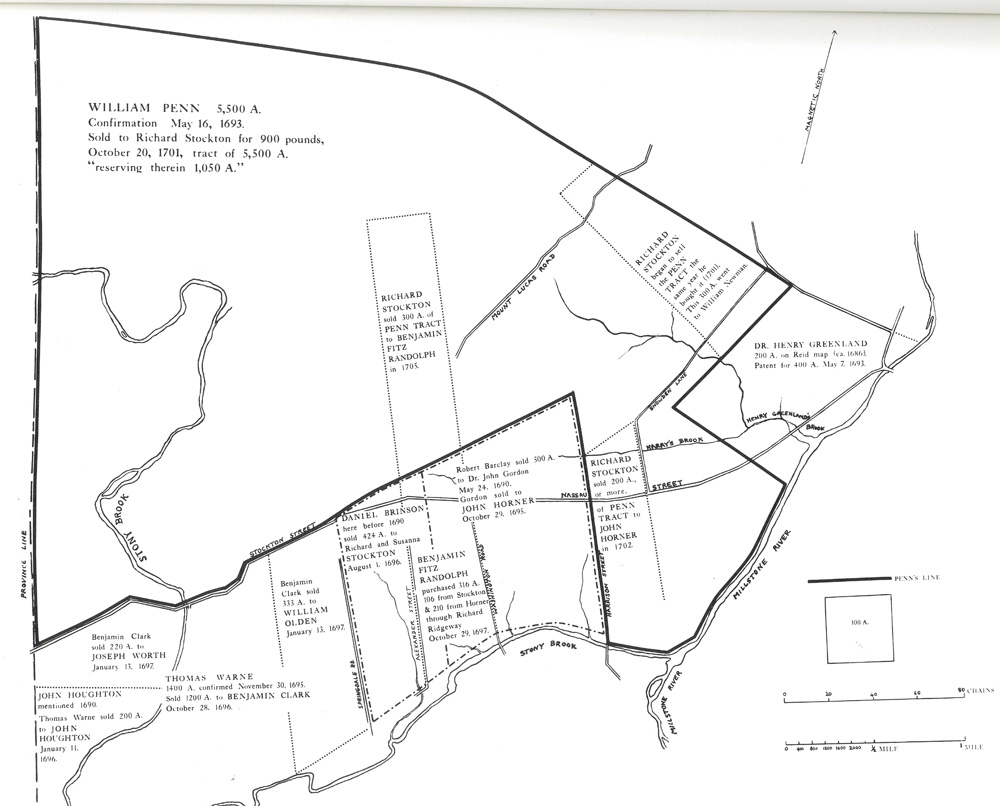
Summary map of early Stony Brook landowners, including William Penn’s acreage, ca. 1690-1705. Originally published in Princeton Architecture by the Princeton University Press. Prepared by Elizabeth G.C. Menzies.
Quaker simplicity in Princeton’s first European community

Summary map of early Stony Brook landowners, including William Penn’s acreage, ca. 1690-1705. Originally published in Princeton Architecture by the Princeton University Press. Prepared by Elizabeth G.C. Menzies.
Known as Wopowog to the Lenni-Lenape Native Americans, this region was attractive for its fertile soil and fresh water supply, now known as Stony Brook. For the Lenape, this was a seasonal location in their regular migrations between the Delaware and Raritan Rivers. The arrival of Europeans in the 1690s forced the Lenape to adjust their movement patterns. There is, however, a Lenape community still active in southwestern New Jersey.
Princeton’s early history is frequently simplified to the settlement of six original Quakers (Benjamin Clarke, William Olden, Joseph Worth, John Hornor, Richard Stockton, and Benjamin Fitz-Randolph), brought here by the influence of William Penn in his plans to make East Jersey a Quaker colony. Yet this summary of early Princeton is not entirely accurate. Henry Greenland, Daniel Brinson, and their families made the Princeton area home before any of the Quakers arrived (see Kingston Mill District). Nor was every early Stony Brook settler a Quaker. And, of course, to identify settlement by the purchases of household patriarchs alone makes it easy to forget that their wives, children, and enslaved people were equally participatory in staking out a new life in unfamiliar territory.
What Stony Brook settlers shared in common was a simple agricultural lifestyle. They typically lived in one-to-three-room cottages built of local wood or fieldstone. They added segments to their houses as needed, and built with function, not style, in mind. Collaboration would have been essential and the community was close. Most families were connected either by marriage or through Quaker Meeting.
Note that The Barracks, one of Princeton’s earliest and best-remembered 18th century structures, is not technically within the bounds of Stony Brook. Its placement in this category is thematic, for its primary owners, Richard “The Settler” and Susannah Stockton, were members of the Quaker community, and holders of the largest tract of land in Stony Brook.
Buildings:
The Barracks
Benjamin Clarke House
Hunt Farm
Worth’s Mill
Olden Manor
Stony Brook Meeting House